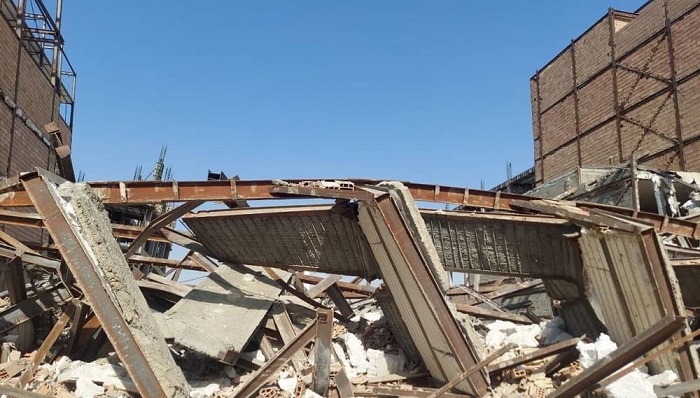

Ali Karimi, the head of Tehran Construction Engineering Organization (TCEO), highlighted that the buildings had been “demolished in a way that deviated from construction principles.”
His comments underscored the professional expertise essential for demolition, an expertise evidently missing during the incident. “No one from the Construction Engineering Organization was present during the demolition,” Karimi added, explaining how the inappropriate use of a loader and wire rope directly caused the calamity.
However, the crux of the issue lies deeper than a mismanaged demolition. Concerns arise about the initial construction of these subpar structures. Mehdi Chamran, the head of the Tehran City Council, insinuated the involvement of powerful groups, including the Islamic Revolutionary Guard Corps and their affiliated contractors, in erecting these inferior structures.
Everything the Collapse of the Metropol Building In Abadan Brought to Lighthttps://t.co/dRRiLuBilX pic.twitter.com/XySFQDQ79o
— NCRI-FAC (@iran_policy) June 3, 2022
Tehran’s construction woes are not an isolated incident. In May 2022, the ten-story Metropol Complex in Abadan collapsed, with many losing their lives. Reports implicated Hossein Abdolbaghi, the project’s owner, who allegedly leveraged connections with the IRGC and local officials to bypass necessary construction standards.
State-led media soon portrayed Abdolbaghi as a victim, diverting attention from the systemic corruption crippling Iran’s construction industry.
The pervasive interference of IRGC-linked companies, operating under the banner of “development bases” and bypassing standard protocols, underscores the systemic decay riddling the clerical regime. Donyaye Eghtesad newspaper highlighted last September how many construction firms overlook crucial safety protocols, prioritizing profit over structural integrity and safety.
Following the #AbadanMetropol disaster, warnings about the dangerous state of #Iran's buildings and towers have surfaced. Watch and listen to how residents of the Edalat 2 building in #Ahvaz have to carry on with their lives. pic.twitter.com/ELpSxWAKGy
— NCRI-FAC (@iran_policy) June 15, 2022
This dangerous trend isn’t novel. A 2012 report from the Mehr News Agency noted that nearly half of Iran’s fatal accidents occurred in construction sites, with building collapses representing a significant portion. Meanwhile, government experts warn that a staggering 55 percent of Tehran’s population, roughly 5 million individuals, resides in earthquake-prone structures, accentuating the looming disaster.
With buildings deteriorating and citizens unable to afford renovations, the situation worsens annually. The true remedy, however, doesn’t lie in merely addressing infrastructural issues. It demands the dismantling of a corruption-ridden system, standing on the brink of collapse. To safeguard the Iranian populace’s future, one edifice, the Beyt, must be the starting point of this deconstruction.
#Iran News in Brief
Following the collapse of the building, the people of #Abadan gathered and protested the systemic negligence by state officials.https://t.co/Ggw5tSsYOy pic.twitter.com/4JlalNos5G
— NCRI-FAC (@iran_policy) May 23, 2022

MEK Iran (follow us on Twitter and Facebook), Maryam Rajavi’s on her site, Twitter & Facebook, NCRI (Twitter & Facebook), and People’s Mojahedin Organization of Iran – MEK IRAN – YouTu







